 W
WActivated alumina is manufactured from aluminium hydroxide by dehydroxylating it in a way that produces a highly porous material; this material can have a surface area significantly over 200 m²/g. The compound is used as a desiccant (to keep things dry by absorbing water from the air) and as a filter of fluoride, arsenic and selenium in drinking water. It is made of aluminium oxide (alumina; Al2O3). It has a very high surface-area-to-weight ratio, due to the many "tunnel like" pores that it has. Activated alumina in its phase composition can be represented only by metastable forms (gamma-Al2O3 etc.). Corundum (alpha-Al2O3), the only stable form of aluminum oxide, does not have such a chemically active surface and is not used as a sorbent.
 W
WActivated carbon, also called activated charcoal, is a form of carbon processed to have small, low-volume pores that increase the surface area available for adsorption or chemical reactions. Activated is sometimes substituted with active.
 W
WAgitated Nutsche filter (ANF) is a filtration technique used in applications such as dye, paint, and pharmaceutical production and waste water treatment. Safety requirements and environmental concerns due to solvent evaporation led to the development of this type of filter wherein filtration under vacuum or pressure can be carried out in closed vessels and solids can be discharged straightaway into a dryer.
 W
WAn air purge system is used to flush electrical control equipment with clean air before it is turned on. This ensures that the functionality of the equipment is not affected or damaged by the contaminants from the surrounding environment.
 W
WAn air purifier or air cleaner is a device which removes contaminants from the air in a room to improve indoor air quality. These devices are commonly marketed as being beneficial to allergy sufferers and asthmatics, and at reducing or eliminating second-hand tobacco smoke.
 W
WAir showers are specialized enclosed antechambers which are incorporated as entryways of cleanrooms and other controlled environments to reduce particle contamination. Air showers utilize high-pressure, HEPA- or ULPA-filtered air to remove dust, fibrous lint and other contaminants from personnel or object surfaces. The forceful "cleansing" of surfaces prior to entering clean environments reduces the number of airborne particulates introduced.
 W
WClean Air Delivery Rate (CADR) is a figure of merit that is the cubic feet per minute (CFM) of air that has had all the particles of a given size distribution removed. For air filters that have air flowing through them, it is the fraction of particles that have been removed from the air, multiplied by the air flow rate through the device. More precisely, it is the CFM of air in a 1,008-cubic-foot (28.5 m3) room that has had all the particles of a given size distribution removed from the air, over and above the rate at which the particles are naturally falling out of the air. Different filters have different abilities to remove different particle distributions, so three CADR's for a given device are typically measured: smoke, pollen, and dust. By combining the amount of airflow and particle removal efficiency, consumers are less likely to be misled by a high efficiency filter that is filtering a small amount of air, or by a high volume of air that is not being filtered very well.
 W
WA cleanroom or clean room is a facility ordinarily utilized as a part of specialized industrial production or scientific research, including the manufacture of pharmaceutical items, integrated circuits, CRT, LCD, OLED and microLED displays. Cleanrooms are designed to maintain extremely low levels of particulates, such as dust, airborne organisms, or vaporized particles. Cleanrooms typically have a cleanliness level quantified by the number of particles per cubic meter at a predetermined molecule measure. The ambient outdoor air in a typical urban area contains 35,000,000 particles for each cubic meter in the size range 0.5 μm and bigger in measurement, equivalent to an ISO 9 cleanroom, while by comparison an ISO 1 cleanroom permits no particles in that size range and just 12 particles for each cubic meter of 0.3 μm and smaller.
 W
WDeveloped for a main use in Bangladesh, the cloth filter is a simple and cost-effective appropriate technology method for reducing the contamination of drinking water. Water collected in this way has a greatly reduced pathogen count - though it will not necessarily be perfectly safe, it is an improvement for poor people with limited options. Filtering water to free it from micro-organisms has been an age-old practice among Jains who carefully remove the micro-organisms in the cloth through filtered water in order to follow doctrine of Ahimsa or non-violence, preventing pain to any living creature.
 W
WA colander is a kitchen utensil used to strain foods such as pasta or to rinse vegetables. The perforated nature of the colander allows liquid to drain through while retaining the solids inside. It is sometimes also called a pasta strainer or kitchen sieve.
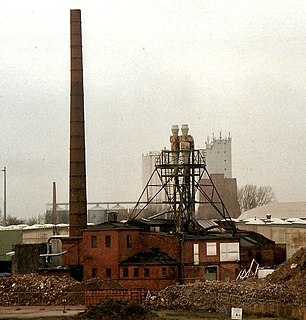 W
WCyclonic separation is a method of removing particulates from an air, gas or liquid stream, without the use of filters, through vortex separation. When removing particulate matter from liquid, a hydrocyclone is used; while from gas, a gas cyclone is used. Rotational effects and gravity are used to separate mixtures of solids and fluids. The method can also be used to separate fine droplets of liquid from a gaseous stream.
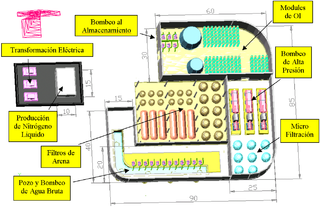 W
WDesalination is a process that takes away mineral components from saline water. More generally, desalination refers to the removal of salts and minerals from a target substance, as in soil desalination, which is an issue for agriculture.
 W
WDialysis tubing, also known as Visking tubing, is an artificial semi-permeable membrane tubing used in separation techniques, that facilitates the flow of tiny molecules in solution based on differential diffusion. In the context of life science research, dialysis tubing is typically used in the sample clean-up and processing of proteins and DNA samples or complex biological samples such as blood or serums. Dialysis tubing is also frequently used as a teaching aid to demonstrate the principles of diffusion, osmosis, Brownian motion and the movement of molecules across a restrictive membrane. For the principles and usage of dialysis in a research setting, see Dialysis (biochemistry).
 W
WA filter cake is formed by the substances that are retained on a filter. Filter aids, such as diatomaceous earth or activated carbon are usually used to form the filter cake. The purpose is to increase flow rate or achieve a smaller micron filtration. The filter cake grows in the course of filtration, becoming "thicker" as particulate matter and filter aid is retained on the filter.
 W
WAn industrial filter press is a tool used in separation processes, specifically to separate solids and liquids. The machine stacks many filter elements and allows the filter to be easily opened to remove the filtered solids, and allows easy cleaning or replacement of the filter media.
 W
WFouling is the accumulation of unwanted material on solid surfaces. The fouling materials can consist of either living organisms (biofouling) or a non-living substance. Fouling is usually distinguished from other surface-growth phenomena in that it occurs on a surface of a component, system, or plant performing a defined and useful function and that the fouling process impedes or interferes with this function.
 W
WFritted glass is finely porous glass through which gas or liquid may pass. It is made by sintering together glass particles into a solid but porous body. This porous glass body can be called a frit. Applications in laboratory glassware include use in fritted glass filter items, scrubbers, or spargers. Other laboratory applications of fritted glass include packing in chromatography columns and resin beds for special chemical synthesis.
 W
WA fuel filter is a filter in a fuel line that screens out dirt and rust particles from the fuel, and is normally made into cartridges containing a filter paper. They are found in most internal combustion engines.
 W
WA hydrocyclone is a device to classify, separate or sort particles in a liquid suspension based on the ratio of their centripetal force to fluid resistance. This ratio is high for dense and coarse particles, and low for light and fine particles. Hydrocyclones also find application in the separation of liquids of different densities.
 W
WK&N Engineering, Inc. is a manufacturer of air filters, cold air intake systems, oil filters, performance parts, and other related products. K&N manufactures over 12,000 parts for various makes and models of cars, trucks, SUVs, motorcycles, ATVs, industrial applications and more. Founded in 1969, K&N is headquartered in Riverside, California, in a complex of 10 buildings comprising nearly 400,000 square feet. K&N also operates facilities in England, the Netherlands, and China. K&N is owned by Goldman Sachs.
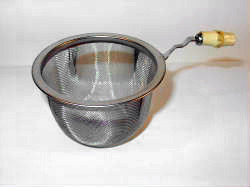 W
WA mesh is a barrier made of connected strands of metal, fiber, or other flexible or ductile materials. A mesh is similar to a web or a net in that it has many attached or woven strands.
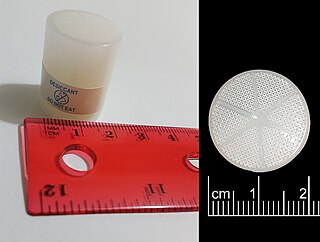 W
WA molecular sieve is a material with pores of uniform size. These pore diameters are similar in size to small molecules, and thus large molecules cannot enter or be adsorbed, while smaller molecules can. As a mixture of molecules migrate through the stationary bed of porous, semi-solid substance referred to as a sieve, the components of highest molecular weight leave the bed first, followed by successively smaller molecules. Some molecular sieves are used in chromatography, a separation technique that sorts molecules based on their size. Other molecular sieves are used as desiccants.
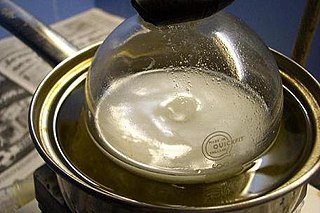 W
WAn oil bath is a type of heated bath used in a laboratory, most commonly used to heat up chemical reactions. It's essentially a container of oil that is heated by a hot plate or a Bunsen burner.
 W
WAn oil filter is a filter designed to remove contaminants from engine oil, transmission oil, lubricating oil, or hydraulic oil. Their chief use is in internal-combustion engines for motor vehicles, powered aircraft, railway locomotives, ships and boats, and static engines such as generators and pumps.. Other vehicle hydraulic systems, such as those in automatic transmissions and power steering, are often equipped with an oil filter. Gas turbine engines, such as those on jet aircraft, also require the use of oil filters. Oil filters are used in many different types of hydraulic machinery. The oil industry itself employs filters for oil production, oil pumping, and oil recycling. Modern engine oil filters tend to be "full-flow" (inline) or "bypass".
 W
WA pop filter, pop shield or pop screen is a noise protection filter for microphones, typically used in a recording studio. It serves to reduce or eliminate popping sounds caused by the mechanical impact of fast-moving air on the microphone from plosives during recorded speech and singing.
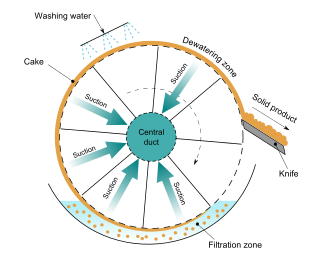 W
WA Rotary Vacuum Filter Drum consists of a drum rotating in a tub of liquid to be filtered.
 W
WSemipermeable membrane is a type of biological or synthetic, polymeric membrane that will allow certain molecules or ions to pass through it by Osmosis—or occasionally by more specialized processes of facilitated diffusion, passive transport or active transport. The rate of passage depends on the pressure, concentration, and temperature of the molecules or solutes on either side, as well as the permeability of the membrane to each solute. Depending on the membrane and the solute, permeability may depend on solute size, solubility, properties, or chemistry. How the membrane is constructed to be selective in its permeability will determine the rate and the permeability. Many natural and synthetic materials thicker than a membrane are also semipermeable. One example of this is the thin film on the inside of the egg. Note that a semipermeable membrane is not the same as a selectively permeable membrane. Semipermeable membrane describes a membrane that allows some particles to pass through, whereas the selectively permeable membrane "chooses" what passes through.
 W
WSheath current filters are electronic components that can prevent noise signals travelling in the sheath of sheathed cables, which can cause interference. Using sheath current filters, ground loops causing mains hum and high frequency common-mode signals can be prevented.
 W
WA tilting pan filter is a chemical equipment used in continuous solid-liquid filtration.
 W
WTurboswing is a type of grease filter used in kitchen ventilation to remove grease particles from the air. It is typically installed inside the extractor hoods of restaurant kitchens. Its operation is based on a rotating filtering medium.